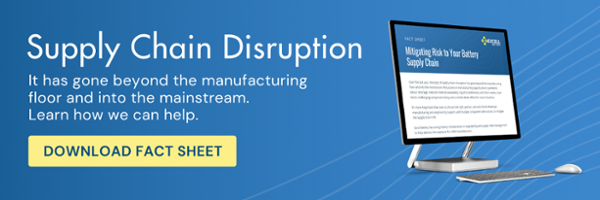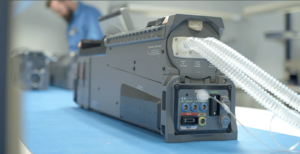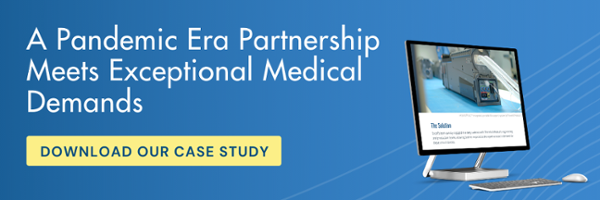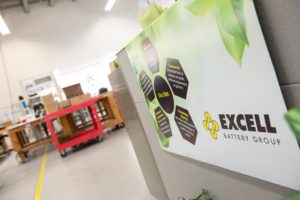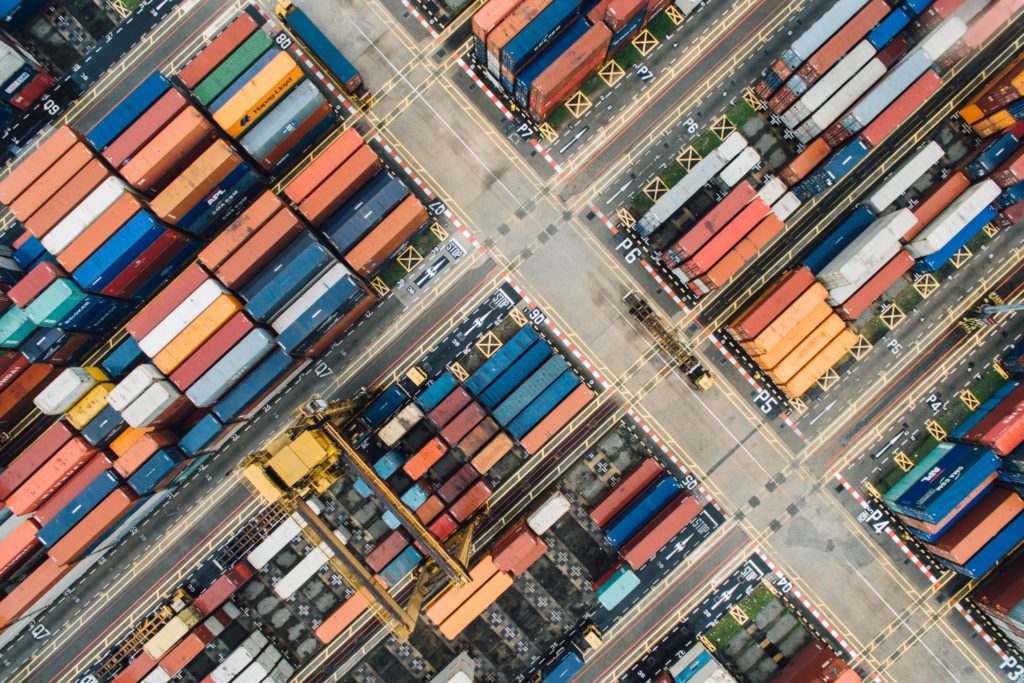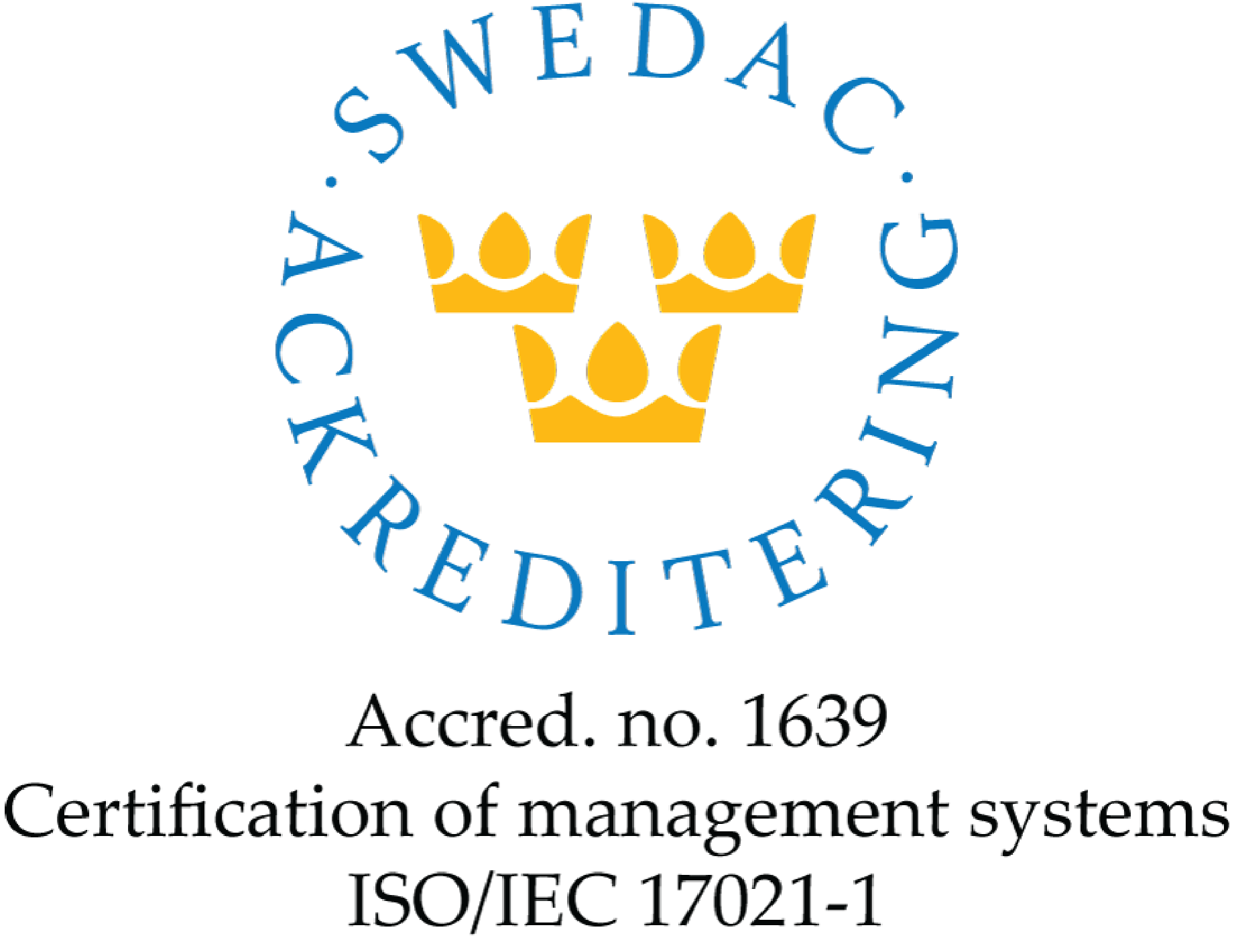The North American Edge in Supply and Product Development Chains
Leave a CommentIn a world increasingly driven by the “buy local” movement, we are witnessing a shift in how consumers view the products they bring into their lives. Although the concept of “local” may seem difficult to apply to electronics, innovative companies are leading the way by incorporating the principles of localization into their engineering and manufacturing processes. By leveraging the talents and resources of our North American employees and facilities at Excell Battery, we are able to ensure a more robust and resilient supply chain and a streamlined product development process.
The Logistical Benefits of Onshoring
In any industry, the greater the distance required to move components through a supply chain, the greater the risk for delays. During the last few years, ports have been plagued by congestion, with shipping containers sometimes waiting weeks to be unloaded. When it comes to batteries, delays in the supply chain can have dire consequences for tech OEMs. In response to logistical delays and tariffs, there is a current movement amongst manufacturers toward “onshoring” their choice of suppliers. By partnering primarily with North American suppliers, Excel Battery substantially reduces the risk of shipment delays, avoids costly tariffs, and ensures a constant and reliable flow of essential components.
At Excell Battery, we take a strategic approach to our engineering and manufacturing operations by positioning them in key North American hubs. Our Canadian facilities in Vancouver, Calgary, and Toronto, coupled with our American facility in Houston, Texas, enable us to meet the demands of North American entities.
The Engineering Benefits of Onshoring
Localization goes beyond the physical location of our manufacturing facilities. Excell Battery boasts a close-knit North American engineering team, allowing us to oversee the entire design process with unrivaled speed and efficiency, free from offshore complications. Even small hurdles like managing workflow amongst different time zones are eased or eliminated when a core team is centralized. This facilitates quick design iteration cycles, enabling us to respond promptly to rapidly changing market demands and stay at the forefront of technological advancements. As a result, our product development chain is characterized by agility, responsiveness, and reliability.
The 2023 North American Advantage
As we settle into the post-COVID era, the persistent reality of supply chain disruptions looms large, fueled by ongoing geopolitical conflicts, inflationary pressures, and unforeseen challenges. Consequently, the accessibility and smooth flow of goods may be affected, leading to port delays, reduced freight availability, price surges, and other concerns. However, at Excell Battery, we are well-positioned to meet these challenges head-on.
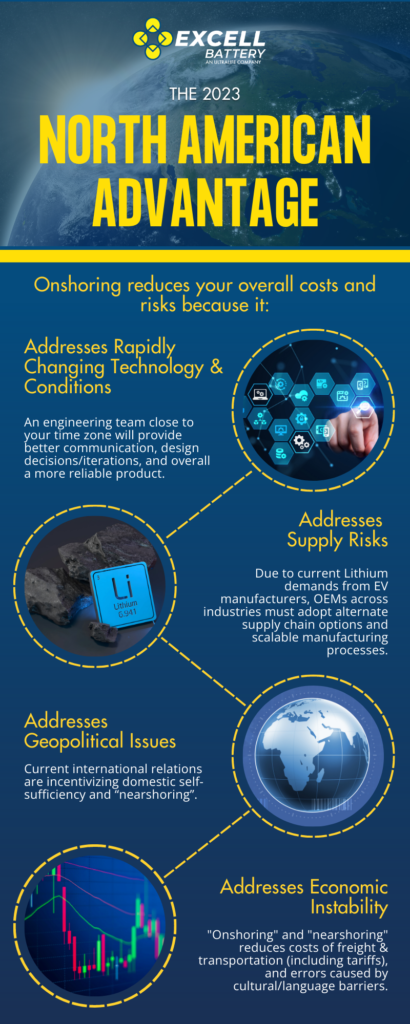
Addressing the Challenges of Supply Risks and Rapidly Changing Technology and Conditions.
The surge in EV (electric vehicles) sales over recent years has intensified the demand for critical materials, putting tremendous pressure on battery component supply chains. As road transport electrification efforts continue to expand, driven by the global commitment to achieve net-zero emissions, the demand for essential materials is expected to further escalate, and technology is expected to advance rapidly. To mitigate the risk of disruptions, one effective strategy is to establish long-term contracts and partnerships with local suppliers, ensuring stability and a reliable supply of crucial resources. Keeping any design operations close to home also enhances our adaptability and responsiveness, so we can navigate any economic or product development challenges with resilience.
Addressing the Challenges of Economic Instability
Economic instability has triggered a cascade of challenges across global supply and product development chains. Fluctuations in demand have become unpredictable, making it challenging for businesses to effectively plan and produce goods. Rapid shifts in demand can lead to excess inventory or shortages, disrupting the supply chain flow. Additionally, the rise in interest rates is compounding the cost of corporate debt, further driving up the cost of labor and goods.
Fluctuating currency exchange rates add another layer of complexity, making it difficult for companies to forecast and manage costs for importing and exporting goods. The constraints of financial uncertainties weigh heavily on businesses, restricting their capacity to invest in crucial areas such as technology, infrastructure, and workforce. Excell Battery’s decision to center our operations within North America offers stability and efficiency. By utilizing local facilities and personnel, we maintain greater control over our supply and product design chains, reducing our vulnerability to external economic pressures.
Addressing the Challenges of Geopolitical Tensions
Amidst current geopolitical tensions, the prospect of material scarcity and soaring raw material prices looms large, presenting challenges to supply chains worldwide. As nations re-evaluate their relationships with global partners, exploring new strategies becomes a necessity. By reducing reliance on overseas suppliers, Excell Battery can maintain a stable flow of materials and minimize the risk of demand fluctuations. In their article, “The Supply Chain Trends Shaking up 2023,” KPMG explained, “Governments and industry leaders are exploring domestic self-sufficiency in material supply and manufacturing. Short of this, they are looking to build ‘friend-shoring’ relationships – trade links with like-minded and most likely geographically close countries (‘nearshoring’) where the supply of goods will likely be more secure.” Taking advantage of friendshoring or nearshoring has additional benefits such as enabling Excell Battery to reduce lead times, lower costs, and improve the speed of our products to market.
The advantages of a North American supply and product development chain are clear – reduced risks of delays, avoidance of costly tariffs, efficient engineering processes, and a focus on local talents and resources. Additionally, local manufacturing offers greater control over production, ensuring consistent quality and timely delivery. By prioritizing these aspects and exploring new supply chain options, Excell Battery is well-equipped to navigate the challenges of a rapidly changing landscape and emerge stronger and more resilient in the face of economic instability, material scarcity, geopolitical issues, and any other challenges that the future may bring.

